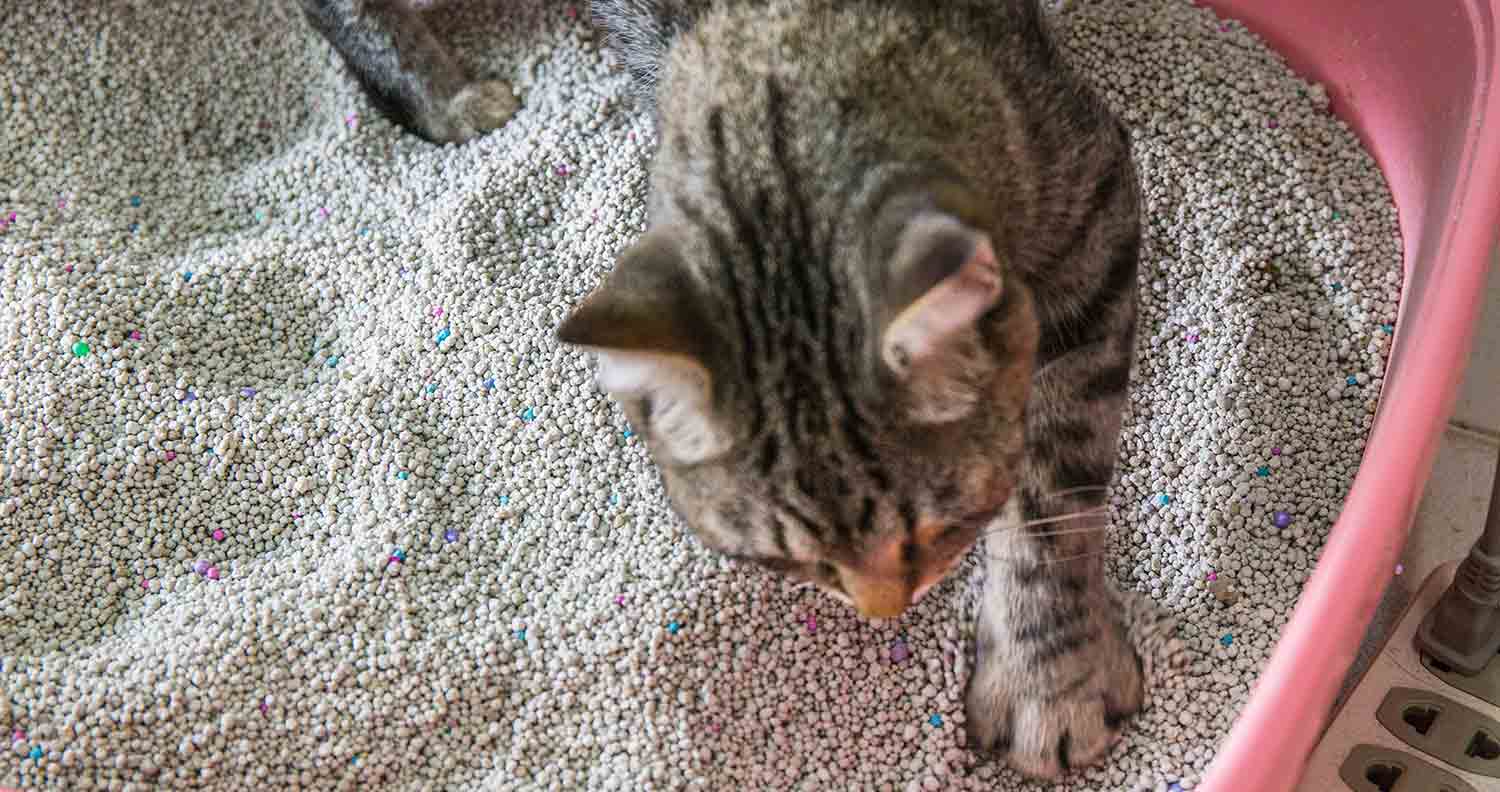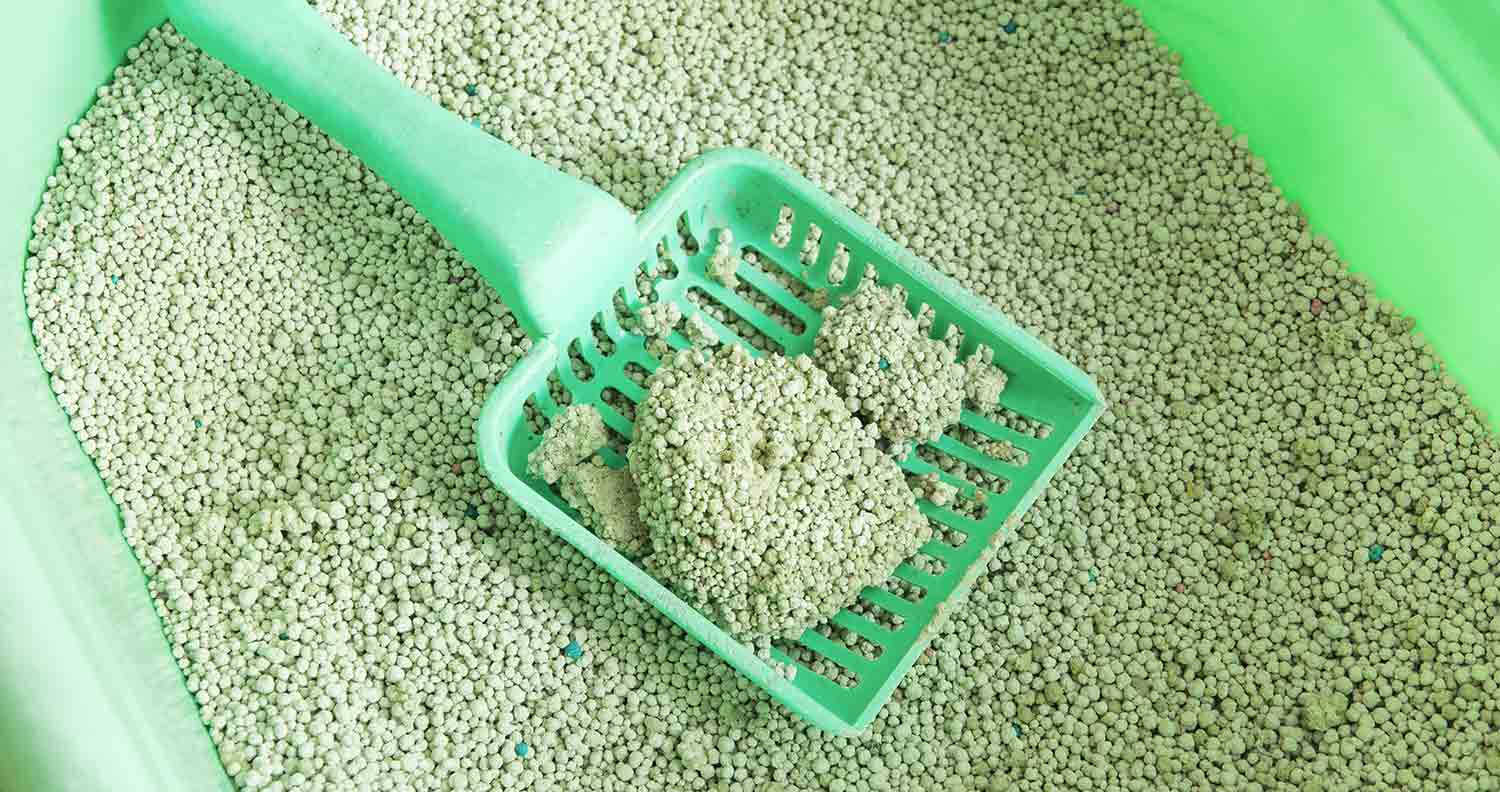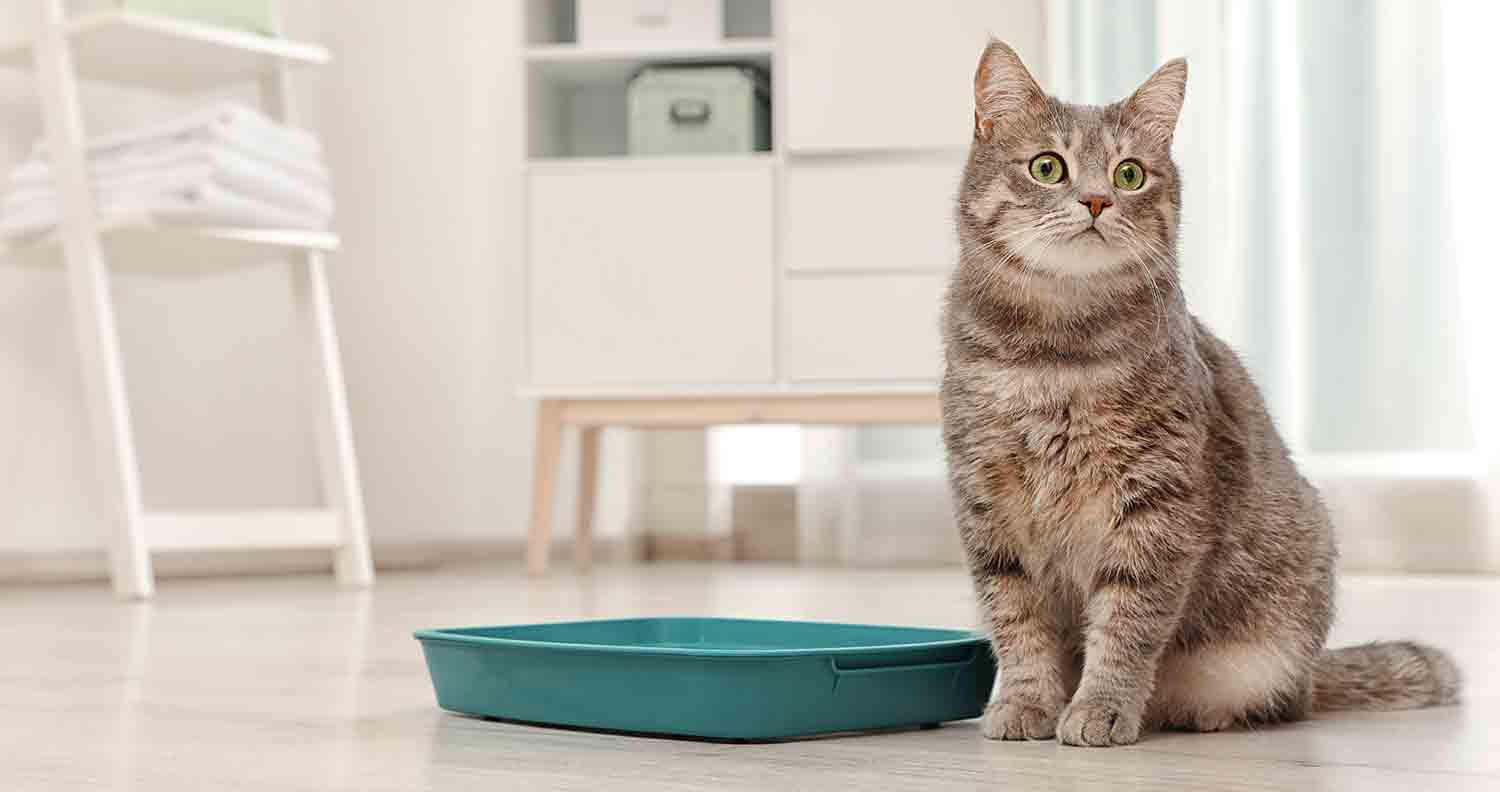No products in the cart.
What’s the Best Cat Litter: Clumping vs Non Clumping litter?
Share:
Clumping vs non-clumping litter isn’t the most exciting product or conversation point in the world, even when you're talking about cat litter, but it’s still pretty crucial.
Even if you have an outdoor cat, there’s no guarantee that they’re going to want to go outside to go to the bathroom like your pooch. If you want to keep your home in tip-top condition, then you need plenty of cat litter, and enough trays.
Today’s cat litter has evolved quite a bit from the products we had a few decades ago. Before the 1940s, most people just filled a box with dirt or sand for their cats. Even then, cats usually ventured outdoors to do their business.
It wasn’t until later in the 1940s that the first clay-based cat litter appeared, complete with handy absorbent properties. Since then, the range of cat litters available has evolved at an incredible pace. Now we have all kinds of cat litter to choose from, including those with deodorizing properties.
The biggest choice you’ll need to make for your fluffy friend is this:
So, clumping vs non-clumping litter, what will it be?
Clumping vs Non Clumping Litter: The Different Kinds
Different kinds of cat litter appeal to different types of cat. There are silica-gel or crystal litters that are all about reducing odor. You can even find certain “automated” cat litter trays that come with a special kind of litter that you need to use every time.
Alternatively, some eco-friendly cat parents prefer cat litters that are made from all-natural and organic ingredients.
The most common types of cat litter fall into two categories however: clumping and non-clumping. These litters work in specific ways to help your kitty hide their waste and ensure you can keep your home smelling fresh.
Clumping and non-clumping cat litters usually both come with a clay element. Clay is the most popular ingredient for any cat litter, accounting for up to 95% of all the litter sold.


Get 30% off and FREE shipping on cat food!
U.S.A. only
To Find out why we recommend chewy.com, click here
So, what does clumping and non-clumping litter mean in the cat litter world? More importantly, how do you make the right choice between the two?


What is Non-Clumping Cat Litter? The Basics
Let’s start with a simple introduction.
Non-clumping cat litter is a kind of litter that doesn’t clump when your cat uses it. This means that there are no chunks of litter to dig out when you’re cleaning the litter tray. Your cat’s urine and poop simply sits where it’s left.
Usually, non-clumping litter is a little cheaper than clumping options. However, this isn’t always the case. Non-clumping litter also means that you don’t have to clean out the tray as often. You only change the litter when it becomes saturated. When your feline friend has used their bathroom several times, it needs to be emptied completely, cleaned, and re-filled with new litter.
Typically, changing your non-clumping litter once a week will keep it from becoming too smelly.
The Pros and Cons of Non-Clumping Cat Litter
Non-clumping cat litter is probably the most common cat litter around. It’s been on the market since back in the 1940s. For a long time, non-clumping litter was the only option for cat owners.
Most non-clumping cat litter was made with bentonite clay, which is highly absorbent, but needs changing often. Although you have to change non-clumping litter fully more frequently, it comes with several unique benefits. For instance, non-clumping litter doesn’t emit much dust. Additionally, many non-clumping litters come with extra features to help with masking odors.
Non-clumping litter is generally not as expensive as clumping litter too. This means that it’s better for you if you’re shopping on a budget. You can also find non-clumping liter made of other ingredients besides clay, such as odor-controlling silica crystals. However, these choices are a lot more expensive.
On the downside, non-clumping litter isn’t ideal if you’re trying to manage odors. Urine and other waste just sits around in the litter box, with nothing to dry it out. This means that you need to clean your full litter box more often. Since you need to change the litter once a week, you also might find that you use more of your litter than you think.
The Pros and Cons of Non-Clumping Cat Litter
Pros:
Cons:


What is Clumping Cat Litter? The Basics
Clumping cat litter is remarkably similar to non-clumping in a lot of ways. The main difference is that it’s designed to clump together when your kitty uses it. The clay absorbs moisture which then forms lumps. This means that you can easily scoop the waste out of the tray and use it for longer.
Clumping litter is excellent for absorbing urine and drying out cat poop. This makes it easier to remove waste from the litter box. Plus, you face fewer odors this way – which is great if you have a smelly cat or two.
For house proud cat parents, clumping litter is usually the most popular option. It’s great for soaking up moisture, and some garage owners even use it for soaking up oil and water spills! Cat litter that clumps can also save you money. Although it’s more expensive than non-clumping litter initially, you don’t need to use as much. This means that you have less waste to worry about.
When you remove clumps from the cat litter, you need to top up the remaining clay in the box. However, it’s easier to do that than replace the entire litter tray every time.
The fact that clumping litter comes with hardened clumps also means it’s easier to scoop. This means that cleaning out the litter box is a simpler and faster experience. Although you still need to replace the entire litter box eventually, you can usually do it every 3 weeks or so, depending on how many cats use the litter.
The Pros and Cons of Clumping Cat Litter
Just like non-clumping litter, clumping cat litter has both positives and negatives to consider. Clumping litter is a newer feature on the cat market compared to non-clumping. It’s excellent for people who want a quick and easy way to stay on top of their cat litter. With clumps to remove, you don’t have to spend as much time scraping through your cat litter.
Because you can easily remove waste, you can keep your litter box looking and smelling a lot better. Plus, you don’t need to change your litter box as frequently with clumping litter either. Clumping products can stay clean and fresh, provided that you’re happy to scoop out waste whenever necessary, and top up supplies when your moggy needs it.
However, there are some downsides to clumping litter too. For instance, at first, your clumping litter will cost a little more than the traditional non-clumping versions. The good news here is that you pay more initially, but you should save extra in the long-run because you don’t have to replace the tray as often.
Another downside of clumping cat litter is that it creates a lot more dust than it’s non-clumping counterpart. When you’re filling your litter box, and when the cat uses the litter, you’re going to have a lot more dust. This can irritate asthma and cause problems with respiratory issues in humans and animals alike. Additionally, this might mean that you need to clean up around the litter tray more often.
If, for any reason, a cat or kitten accidentally eats some clumping cat litter, there’s a danger there. If the litter swells in the kitty’s esophagus or stomach, then it might cause blockages which are seriously problematic.
Clumping cat litter is also much heavier to lift and use. If you don’t have a lot of strength in your arms, and there’s no-one around to help you, then you might have some trouble refilling the cat litter trays that you use around the home.
The Pros and Cons of Clumping Cat Litter
Pros:
Cons:


The Biggest Differences Between Clumping vs Non-Clumping Litter
The most obvious difference between clumping and non-clumping litter is that one clumps, and the other doesn’t. However, that’s not going to help you make an informed purchasing decision. With that in mind, we’ve listed some of the biggest factors that could influence which cat litter you use:
Odor control
There’s a huge difference between the odor control experience you get from clumping and non-clumping litter. Clumping litter offers a lot more absorbing power to create clumps. This helps to deodorize your cat’s waste and reduce the smell. Most odor-controlling litter features some kind of clumping mechanism to lock in smells.
Non-clumping litter, on the other hand, doesn't rely on clumping features to manage smells. However, that doesn’t mean that there’s no odor control available with non-clumping products. These litters usually employ the naturally absorbent properties of the litter to get rid of extra smells. Some non-clumping litter add odor-controlling elements like artificial fragrances and activated charcoal to the mixture to help with smell management.
Absorbency
Another major difference between non-clumping and clumping litter is the absorbency. Clumping litters are generally more absorbent because they create clumps around the waste of your kitty. This means that liquid waste doesn’t just seep through to the bottom of your litter tray. The less liquid you have in your tray, the less cleaning you need to do when you replace all of the litter for your cats each week.
Unfortunately, non-clumping letters aren’t so great at absorbing fluids. Although these litters come with a saturation point, which allows them to hold moisture to a certain level, they can’t give you the same absorbent experience. You’ll probably need to wash your litter tray thoroughly every time you clean it out, which means more work for you.
Dust control
Don’t be fooled, both clumping and non clumping litter have issues when it comes to dust. Dust comes from the tiny particles in your cat litter, left over from clay and other substances. Not only is dust from cat litter super messy it’s also dangerous. Clouds of dust will irritate your airways when you’re pouring the litter and may lead to coughs. Additionally, your cat can be exposed to this dust when they’re digging around the litter too.
Clumping litters generally have a lot more dust because smaller particles are better at absorbing liquids. The smaller the particles in the litter, the more dust you get. It’s worth making sure that your cat doesn’t breathe in too much of this dust. Non-clumping litters have much larger particles than clumping options. This leads to fewer clouds of dust. However, non-clumping litter can suffer from dust problems too.
Tracking
Another major problem worth thinking about when it comes to deciding between clumping or non clumping litter is how likely your choice is to stick to your kitty’s paws. If you’re sick of tidying up after dusty paw prints, then you want a litter that’s not going to cause as many tracking issues.
All kinds of cat litter can get stuck to a cat’s paws, particularly if your kitty has longer fur around their little beans. Unfortunately, clumping litter is generally messier, because the smaller particles can stick to your cat’s paws more effectively. The smaller the particles, the more your kitty is going to drag dust around the home.
Non-clumping litter isn’t quite as bad from a tracking perspective, but it still has it’s issues. The amount of tracking issues you have will depend on the size of the pellets in the cat litter. Larger pellets won’t stick to your cat’s paws as much. Since non-clumping litter doesn’t stick together, it doesn’t create any moist, paste-like substances that will cling to your cat either.
Ease of use
Finally, we all want an easy life when it comes to looking after our cats and their bathroom habits – right? That means that you need a cat litter that’s easy to use. There are a few factors to consider when looking at the complexity of using clumping or non clumping litter.
For instance, clumping litter is a lot easier to use overall, because you can scoop out waste whenever you choose. You don’t have to empty the entire litter tray every week, which means less work overall. Plus, you might find that it’s much easier to keep the litter tray clean. With no pooled urine at the bottom of the tray, you don’t have to worry about washing your cat’s bathroom as often.
On the other hand, non-clumping litters aren’t as easy to scoop. The granules don’t stick together. Although you can remove things like chunks of waste from the litter tray, you can’t do much about the urine. Eventually, you’ll need to replace the entire tray and clean it out with hot water.
However, non-clumping litters are easy to use in other ways. For instance, a non-clumping litter will usually be a lot more lightweight than its clumping counterpart. If you’re a little older, or you’re not as strong as you used to be, then going for non-clumping could save you some strain.
Clumping vs Non Clumping Litter: Which is the Best Kind of Cat Litter?
So, which kind of cat litter should you pick? Clumping or non clumping litter? There’s not really a one-size-fits-all option here. The choice between clumping and non-clumping products will come down to your personal preferences. Additionally, you’ll probably want to pay close attention to the preferences of Mr. Fluffball too. Remember, cats have their own opinions when it comes to the kind of litter they like to use.
In the meantime, let’s go over your options and what each choice is best for one last time.
Clumping cat litter is the right choice for you if:
Non-clumping cat litter is a better choice if:
Final Thoughts on Clumping vs Non Clumping Litter
Remember, if you’re committed to using clumping litter and your kitty doesn’t like it, then they won’t be afraid to go to the bathroom outside of the litter box instead. Choosing the cat litter that your fluffy friend prefers will lead to fewer issues with accidents around the home. Keep an eye on your moggy and see if there are any signs that they might prefer either clumping or non clumping litter. Depending on your cat, your vet might also suggest using certain kinds of litter. It’s always worth paying attention to your vet’s tips.
Another bonus tip? Remember to have the right number of litter trays around the house. One litter tray for every cat you care for, plus an extra one is usually the best way to go. This means that if you have two cats, you’ll need at least 3 litter trays. Keep them properly filled.


Get 30% off and FREE shipping on cat supplies!
U.S.A only
To Find out why we recommend chewy.com, click here
Share: